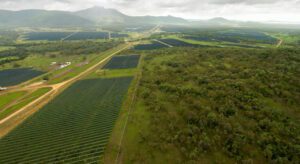It’s often the decisions made by our leaders which are the least widely understood that have the potential to have the greatest impacts on markets, investment and industry. This is especially true of Australia’s green energy transition.
At the October 2022 Energy Ministers’ Meeting (EMM), state and federal ministers committed to resolving the highly-contested congestion management mechanism as a near term priority.
The evolving needs of adapting a grid designed around coal fired generators to geographically dispersed renewables makes this a pressing priority.
Energy Ministers tasked senior officials and the Energy Security Board to jointly undertake stakeholder consultation on the full range of options with recommendations to be considered at the first EMM in February 2023.
Transmission coordination and access has been a much-debated topic for almost a decade.
Today, the Department of Climate Change, Energy, Environment and Water and the ESB held a Public Forum on Congestion Management.
The pre-read for the meeting was enlightening. It shows just how long this issue has been discussed and how long it is taking to reach consensus and productive action.
Back in 2016, the COAG Energy Council recognised the Regulatory Investment Test for Transmission (RIT-T) process required a review and update to better co-ordinate investment between generation and transmission and tasked the Australian Energy Market Commission (AEMC) to consider recommendations.
In 2019, after almost three years of attempted reviews, the AEMC proposed the Coordination of Generation and Transmission Investment (COGATI), Transmission Access Reform (TAR) mechanism which proposed a new methodology for the allocation of transmission access to individual generators.
Industry was in open revolt.
In March 2020, the AEMC took the logical decision to delay plans to implement its COGATI reform to July 2022.
The process was moved under the umbrella of the ESB’s Post-2025 Market Design project to be considered in the full context of Post-2025 market reforms.
The transmission access reforms, however, were not resolved even after three years of ESB consultations.
Despite sustained and overwhelming opposition over the past four years, the ESB continues to pursue a transmission access regime based on Locational Marginal Pricing (LMP), a reform with minimal benefits and significant cost and uncertainty for market participants.
While the ESB has proposed a variation to the Congestion Management Model (CMM) in its final report, it is still fundamentally an LMP-based proposal, and comes with the associated risks and shortfalls.
Implementing LMP would needlessly disrupt the electricity market and significantly increase risks for investors. This would create a barrier to the much-needed new physical investment in renewable generation and storage as ageing coal power stations exit the system over the coming years.
It would also inevitably increase costs that would be passed on to consumers in the form of higher bills as the new system will take years to implement and settle.
Few issues in energy have galvanised the industry in opposition as solidly as Locational Marginal Pricing.
The submissions to the ESB November 2022 consultation give voice to strong opposition across energy and the industries that rely upon its success.
Almost all submissions rejected redesigning the market to a complex “locational marginal pricing” model, noting the impact it will have on the financial market and contracts, creating a lawyers’ picnic.
The Australian Aluminium Council, in its submission says: “The Council’s broad preference would therefore be for changes which minimise complexities as far as possible, and which elicit broad stakeholder consensus about their practicality.
“Nor should the status quo, however problematic that may currently appear, remain off the table”
AFMA, the Australian Financial Markets Association, states that it is: “disappointed … that the ESB failed to take into account the impact of the financial market on bidding behaviour.”
We have experienced excruciating delays in energy reform over the past decade, thanks to the previous Federal Government, and the results are ultimately adding costs to consumers.
The electricity industry is recognised as one of the key sectors which can help or hinder economic recovery and growth through investment and lower energy costs.
Getting this right and doing it in a timely fashion is critically important.
This, coupled with the significant transformation of our energy market, requires careful consideration to ensure Australians are central to the vision and pathway.
Transmission access reforms remains the sole workstream for the ESB.
Energy ministers should direct the ESB to cease all work on LMP-based options and direct the market bodies to immediately progress with the enhanced information reform and provide information on transmission capacity and congestion to improve the efficiency of investments.
This recommendation was put forward by industry and overwhelmingly supported in submissions to the ESB. This ‘no regrets’ reform will facilitate investment decisions on project location, by supporting investors to better evaluate congestion risks to projects.
It is time to put an end to COGATI and LMP right now and focus our resources and effort on facilitating the efficient and timely build out of transmission and generation that Australia’s energy transition needs.
There is no evidence LMP has delivered significant customer benefits anywhere. The AEMC’s own research showed that there was rent seeking behaviour on the transmission rights in other markets.
We must now refocus our resources on building the transmission and new generation needed.
The Labor Government has shown strong leadership in energy since coming to power.
In collaboration with our Energy Ministers, it now has the opportunity to make the right decision to put this to bed when they meet in February.
Stephanie Bashir in the principal of Nexa Advisory.







